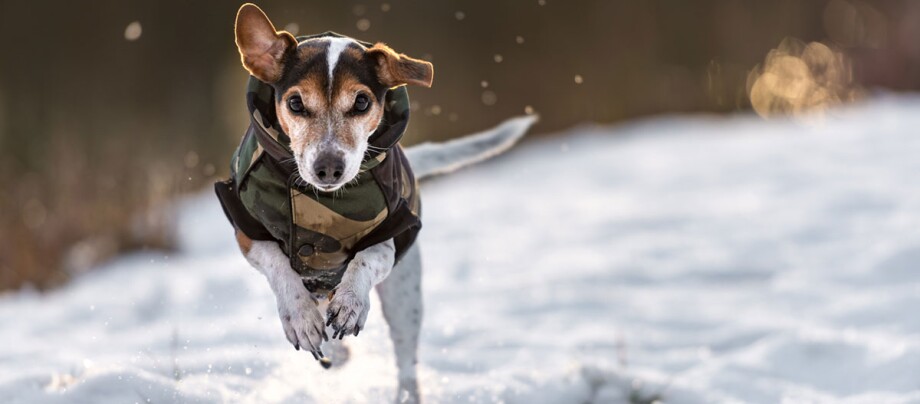Why Your Dog Is Cold and How to Protect Them Against the Elements
07.10.2022 - Reading time: 4 minutes

For a long time, people thought that dogs have fur and can’t get cold. That is only partially true. Our dogs have very different kinds of fur which doesn’t always protect them from environmental factors to the same degree. Many breeds that are now common in Germany originally come from southern Europe or other warm countries. Naturally, they don’t have the thick coat of a St. Bernard and get cold faster. Find out here why your dog is cold and what you can do about it.
Why are dogs cold, despite their fur?
A dog’s fur varies as widely as the breeds do. Dogs from southern Europe and “dwarf” breeds in particular are not well-equipped for everything our weather can throw at them.
A dog’s fur may have one or many layers. The length and characteristics of the fur determine how well the fur can protect them: long, fine fur with only a thin undercoat, or none at all, can only keep a dog warm or protect it from water to a certain degree. On the other hand, the multi-layered, woolly fur that huskies or other Nordic breeds have, can both repel water and store heat wonderfully.
Southern European Greyhounds and hunting dogs, such as Whippets or Podencos, have short, very fine fur without an undercoat. Because these breeds are sprinters, they are very thin and have no or very sparse fat reserves in the upper layer of their skin to protect them from the cold.
There are two types of dogs that tend to get cold:
- Dogs that have no undercoat, or have very fine fur
- and/or dogs with no protective layer of fat.
A dog that gets cold too quickly may also be malnourished, which can happen if your dog belongs to a breed that is very thin, so that it is not immediately apparent. Find out from your vet what the optimal weight for your dog is.
The right fur care can influence the quality of your dog’s fur. If you can avoid it, never bathe your dog in the winter. This can impede the protective qualities of the fur and skin. The dog will then not only get cold faster, it will also be more susceptible to diseases, such as dog colds.
Dogs with parasite infestations are also less resilient, often have dull or fragile fur and are often malnourished. This also causes them to get cold quickly.
When does your dog get cold?
Just as with people, shivering in dogs is a reliable sign that the dog is too cold. However, there is also the possibility that it is stressed and might be shivering for that reason. You know your dog best and will quickly recognise the reason.
Signs of cold:
- the dog seems tense and stiff when going walkies
- visibly cramped posture
- the dog is reluctant to go outside or won’t go outside at all
If your dog snuggles up to a protective area, your leg for example, during winter walks, it’s a sign that your dog is cold. If it has a constant cold or recurrent bladder or kidney infections, you should dress it in a dog coat when going out for walks.
Functional dog clothing
Opponents of pet apparel often argue that dogs have their own coat and therefore don’t need a “fancy little jacket” to protect them from the cold. Although this is rooted in ignorance, to the chagrin of many of our four-legged friends, it is something that many pet owners still believe. Just think about the change in temperature your dog has to endure when going from a room heated to up to 25°C to sub-zero temperatures outside.
In this situation, using dog jackets, jumpers and winter coats is nothing to do with fashion, it’s about providing dogs with the necessary protection against cold and wet weather in winter or during transition seasons. Dogs that get to move around freely outside during the cold season are better able to regulate their body heat. Getting lots of exercise all year round also help to keep your dog’s immune system strong.
However, as mentioned above, not every dog is equipped with the right coat to protect them from the wet and cold. For thin-coated dogs, wearing a dog jacket is certainly no “fashion statement”.
The garment should fit your dog well, provide freedom of movement and not hinder communication with other dogs.
Dogs find it difficult to compensate for heat loss when:
- their immune system is compromised,
- they are ill (e.g. parasite infestation),
- they are already old and frail,
- they suffer from arthritis, back or other joint problems,
- they are still pups,
- they have just had a hair trim and/or a bath, which should be avoided in winter,
- they have a thin undercoat or
- very little subcutaneous fat.


